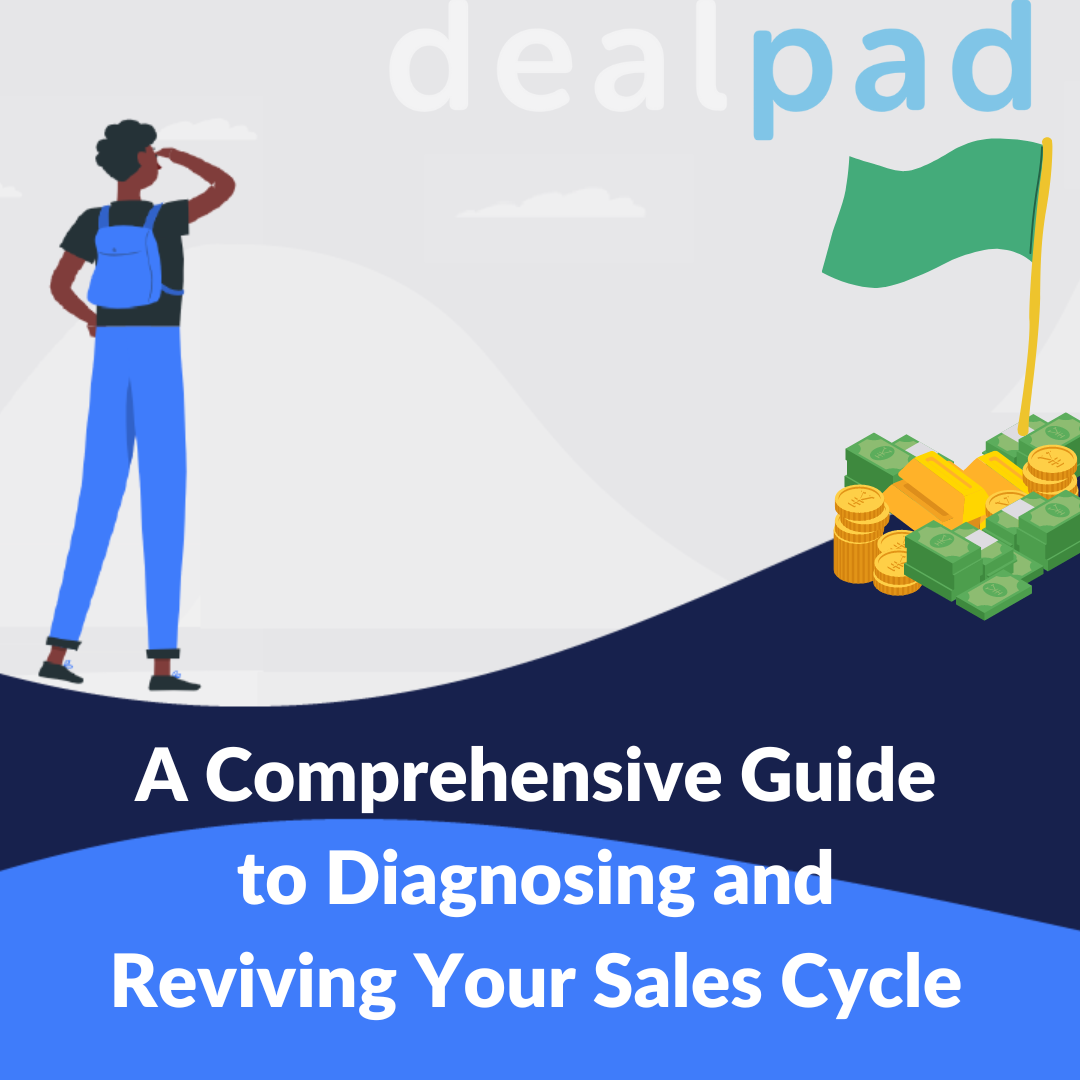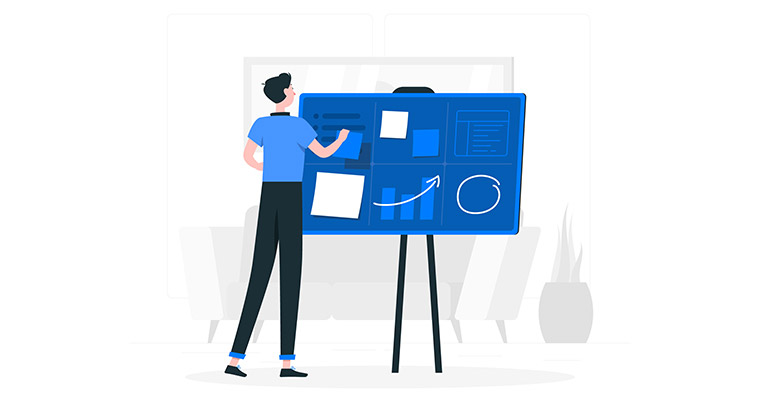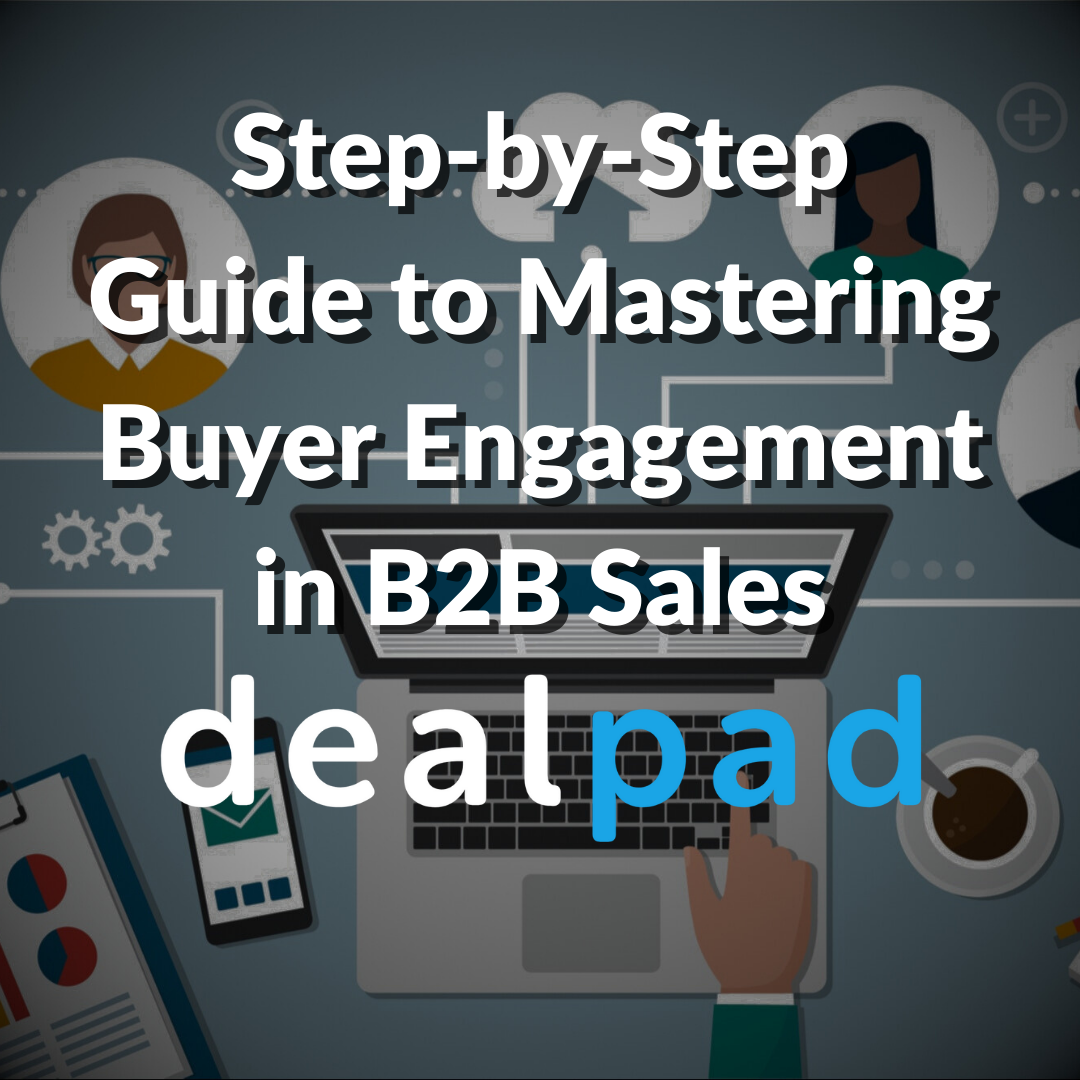A Comprehensive Guide to Diagnosing and Reviving Your Sales Cycle

Setting the Stage for Sales Success
In the intricate dance of sales, every step counts. You don’t just waltz in and close a deal. It's a calculated, nuanced process, one that requires awareness, adaptation, and precision. Many sales teams are aware of the broader issues in their sales cycles but overlook the subtle details that can make or break a deal. In this guide, we'll go stage by stage, from discovery to close, identifying common problems, framing them, understanding their trickle-down effects, and suggesting solutions tailored to various scenarios.
Discovery: Unearthing Potential and Hidden Challenges
1. Listening vs. Talking Balance
Challenge: Many sales reps tend to dominate conversations, missing essential buyer cues.
Effect: This imbalance leads to a lack of understanding and disconnect between buyer needs and proposed solutions.
Example Talk Track: "I see that you're concerned about X. How has this affected your current operations? [Pause for response]"
Solutions:
- For an aggressive rep style, practice patience and attentive listening.
- For team goals focusing on rapport building, emphasize open-ended questions.
2. Asking Probing Questions
Challenge: Lack of deep questions to uncover core needs.
Effect: Shallow discovery leads to misaligned solutions and lost opportunities.
Example Talk Track: "Can you explain how Y is impacting your team? What are the key challenges you're currently facing with this?"
Solutions:
- For management focusing on solution selling, train reps in consultative questioning.
- For teams emphasizing empathy, foster an environment of curiosity and care.
3. Impact on Engagement
Challenge: Weak discovery questions and poor listening can disengage the buyer.
Effect: Loss of buyer interest, trust, and potential deals.
Example Talk Track: "I understand that Z is a priority for you. How can we collaborate to find the best solution?"
Solutions:
- For organizations aiming for long-term relationships, build connections through meaningful conversations.
- For goal-driven teams, align discovery with clear objectives and outcomes.
4. Misalignment with Buyer Needs
Challenge: Failing to align offerings with specific buyer needs.
Effect: Proposing irrelevant solutions, wasting time, and frustrating buyers.
Example Talk Track: "It seems that A is your main challenge. How have you tried to address this before, and what can we do differently?"
Solutions:
- For innovative management styles, promote creative problem-solving and adaptability.
- For teams with varying rep styles, encourage personalized approaches to match buyer needs.
Qualification: Determining the Right Fit
1. Understanding Buyer Needs and Budget
Challenge: Inaccurately assessing the buyer's budget or aligning it with their needs.
Effect: Wasted time pursuing unqualified leads or proposing unfit solutions.
Example Talk Track: "Can we discuss your budget for this solution? What are the must-haves and nice-to-haves for you?"
Solutions:
- For efficiency-driven leaders, implement stringent qualification criteria.
- For consultative selling, foster an open dialogue about budget and expectations, hinting at a future MAP.
2. Aligning with Decision Makers
Challenge: Failing to reach or engage the actual decision-makers in the organization.
Effect: Prolonged sales cycle, miscommunication, and potential loss of opportunity.
Example Talk Track: "Who else should be involved in this conversation to ensure we align with your organizational goals? This will be crucial as we move towards building a mutual action plan."
Solutions:
- For teams targeting enterprise sales, create strategies to navigate complex organizational structures.
- For SMB-focused reps, ensure clarity on who the decision influencers are, paving the way for MAP collaboration.
3. Matching Solutions to Problems
Challenge: Inadequate alignment of proposed solutions with the actual problems faced by the buyer.
Effect: Buyer disinterest and loss of trust.
Example Talk Track: "You've mentioned that B is a significant issue for your team. How does our solution align with resolving this challenge? We can detail this further in our mutual action plan."
Solutions:
- For innovative teams, promote understanding through demos and customized presentations.
- For relationship-focused sellers, emphasize collaboration and co-creation of solutions, leading to MAP development.
4. Timeframe Alignment
Challenge: Misalignment between the buyer's purchasing timeline and the sales process.
Effect: Delays, frustrations, and lost momentum.
Example Talk Track: "What's your timeframe for implementing this solution? How can we ensure that our process aligns with your schedule? We'll be defining this in our mutual action plan."
Solutions:
- For fast-paced sales environments, create clear timelines and expectations, preparing for MAP.
- For consultative processes, work collaboratively with the buyer to align timelines, incorporating MAPs as a central tool.
Proposal: Crafting a Tailored Solution
1. Understanding and Addressing Objections
Challenge: Inability to foresee or address buyer objections effectively.
Effect: Hindered progress, loss of confidence, and potentially losing the deal.
Example Talk Track: "What concerns do you have about our solution? Let's discuss them openly so we can address them in our proposal."
Solutions:
- For proactive teams, maintain a running list of common objections and ready responses.
- For collaborative sales approaches, engage buyers in co-creating solutions and highlight this collaboration in your MAP.
2. Tailoring the Proposal to Buyer Needs
Challenge: Creating a one-size-fits-all proposal that doesn't cater to the specific needs of the buyer.
Effect: Diminished interest and failure to demonstrate understanding of the buyer's unique challenges.
Example Talk Track: "Based on our conversations, we've tailored this proposal to meet your specific needs, including [specific aspects]. Can we walk through it together?"
Solutions:
- For value-driven sales, emphasize how the proposal aligns with the buyer's needs and how this will be reflected in the MAP.
- For relationship-building approaches, involve the buyer in the proposal creation process, setting the stage for a MAP.
3. Alignment with Decision Makers
Challenge: Not aligning the proposal with the interests and concerns of all decision-makers.
Effect: Potential rejection or extended negotiations.
Example Talk Track: "Have we addressed the concerns of all key stakeholders in this proposal? Your insights were vital in shaping this, and it'll be part of our MAP."
Solutions:
- For complex sales, engage multiple stakeholders in the proposal review, reflecting their input in the MAP.
- For simpler sales, ensure decision-maker alignment with a transparent, detailed proposal that feeds into the MAP.
4. Timely Follow-up and Negotiation
Challenge: Delayed follow-up or unstructured negotiation process.
Effect: Loss of momentum, buyer disinterest, or unfavorable negotiation outcomes.
Example Talk Track: "Can we schedule a follow-up to discuss any adjustments or questions you might have about the proposal? We can then finalize our MAP."
Solutions:
- For efficiency-focused teams, create a structured follow-up schedule that aligns with MAP timelines.
- For relationship-focused sales, facilitate an open and responsive negotiation process, integrating adjustments into the MAP.
The Proposal stage in the sales cycle is critical, as it involves presenting a solution tailored to the buyer's specific needs. By following this framework, we provide clarity and structure, focusing on common challenges, their effects, solutions, and tying them subtly with the concept of MAPs. This approach ensures that the proposal is not just a transactional document but a collaborative tool that brings the seller and buyer closer to a shared vision, as reflected in the MAP.
Negotiation: The Art of Reaching a Win-Win Agreement
1. Understanding Stakeholder Priorities
Challenge: Not fully understanding what matters most to all stakeholders.
Effect: Potential roadblocks, stalled negotiations, dissatisfaction.
Example Talk Track: "Let's ensure we're aligned on the key priorities. Can you help me understand what matters most to each decision-maker?"
Solutions:
For collaborative teams, create a Mutual Action Plan that clearly outlines each stakeholder's priorities.
For competitive sales environments, build a robust communication plan within the MAP to keep everyone informed.
2. Balancing Concessions and Demands:
Challenge: Over or under-negotiating, leading to a lopsided agreement.
Effect: Strained relationship, loss of value for one or both parties.
Example Talk Track: "We want this partnership to be beneficial for both of us. Let's work together through our Mutual Action Plan to find the right balance."
Solutions:
- For relationship-driven teams, use the MAP to clarify the give-and-take in the negotiation.
- For transaction-focused sales, employ the MAP to track and balance the negotiation's key terms.
3. Maintaining Momentum
Challenge: Negotiations dragging on too long, losing momentum and focus.
Effect: Delayed deals, loss of interest, or competitive intrusion.
Example Talk Track: "Our Mutual Action Plan has set timelines. Shall we work together to meet these, ensuring a timely agreement?"
Solutions:
- For time-sensitive sales, employ the MAP to set clear timelines for each negotiation phase.
- For complex deals, use the MAP as a tool to ensure that all parts are progressing in tandem.
4. Building Trust and Transparency
Challenge: Lack of trust, hidden agendas, or lack of transparency.
Effect: Breakdown in negotiations, potential deal failure.
Example Talk Track: "Our Mutual Action Plan outlines our commitments. Can we discuss how we can further build trust and transparency?"
Solutions:
- For trust-centric sales, ensure that the MAP reflects all commitments, fostering accountability.
- For deals requiring high transparency, use the MAP as a living document that all parties can access and contribute to.
Negotiation is often seen as a tug of war, but it doesn't have to be. By understanding stakeholder priorities, balancing concessions, maintaining momentum, and building trust, negotiations can lead to a win-win scenario. Embedding these aspects into a Mutual Action Plan (MAP) helps align expectations and commitments, turning the negotiation stage into a collaborative effort rather than a battlefield.
Closing: Sealing the Deal with Precision
1. Setting Clear Expectations
Challenge: Lack of clarity or agreement on the final terms.
Effect: Delays, misunderstandings, and potential deal collapse.
Example Talk Track: "Are we aligned on all terms, and is there anything else you need before we proceed to close? This will help us refine our Mutual Action Plan."
Solutions:
- For process-driven teams, use a checklist for final terms, aligned with the MAP.
- For relationship-centric teams, a one-on-one meeting to review the terms, reflecting agreements in the MAP.
2. Timely Execution
Challenge: Delays in signing the agreement or executing the final steps.
Effect: Loss of trust, momentum, and potentially the entire deal.
Example Talk Track: "We're excited to move forward. Let's set a date for finalizing everything, so it aligns with our Mutual Action Plan."
Solutions:
- For deadline-oriented teams, use the MAP to set and track final execution steps.
- For flexibility-focused sales, allow some leeway but always refer back to the MAP to keep things on track.
3. Ensuring Smooth Transition to Implementation
Challenge: Lack of planning for post-sale implementation or handoff.
Effect: Confusion, dissatisfaction, and a weak start to the relationship.
Example Talk Track: "Our Mutual Action Plan includes the next steps after closing. Can we discuss how to make the transition seamless?"
Solutions:
- For service-focused teams, create a detailed handoff plan as part of the MAP.
- For customer-centric sales, ensure the buyer's involvement in planning the implementation phase within the MAP.
4. Building a Foundation for Future Upsell or Referral
Challenge: Missing the opportunity to set the stage for future business.
Effect: Lost revenue potential and the weakening of the long-term relationship.
Example Talk Track: "We're committed to your success. Let's discuss how we can grow together, and how our MAP can evolve as our partnership does."
Solutions:
- For growth-oriented teams, include future possibilities in the MAP as tentative items.
- For relationship-building teams, express openness to future collaboration within the context of the MAP.
The Closing stage is the culmination of the sales process, where precision, trust, and careful execution are key. By setting clear expectations, ensuring timely execution, planning the transition, and building a foundation for future business, sellers can navigate this crucial phase effectively. Integrating these aspects into a Mutual Action Plan (MAP) can be a subtle yet powerful way to align both parties and set the stage for a fruitful long-term relationship.
Conclusion: Bridging the Gap and Engaging Buyers Through Every Stage
What do you do when the sale starts to get stuck? Maybe people stop talking to you, or the folks who were once helping you scatter like leaves in the wind. That beautiful music starts to lose its tune.
Here's where you need to keep everyone on the same page. You need clear directions and a good plan that everyone can follow. That's what we call a Mutual Action Plan. But a plan isn't always enough.
Imagine having a tool that doesn't just give you a plan but helps you live it. A tool that makes it easy to keep everyone involved and helps you move smoothly through the toughest parts of a sale.
Where all the information is easy to find, where working together is a breeze, and where the buyer is engaged and easy to reach.
We've looked at many ways to handle different people and goals in sales, but putting all these parts together is what really makes things click.
DealPad, is more than just closing a sale. It's about understanding sales, taking care of them, and most importantly, keeping them alive when most of them tend to fail.
Are you excited to take a closer look at your sales process and make it work better? Maybe the right tool is like a conductor for your orchestra, helping you lead the way.
Stay with us for our next blog. We'll dig deeper into the steps between qualification and proposal - the part of the sale where things either take off or fall flat. Together, we'll find new ways to make selling less challenging and more fun.

